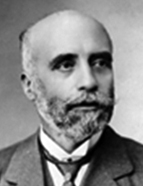

This was his way of keeping abreast of specialised bibliography and of encouraging the dissemination of research on Portuguese topics by way of exchange and offer. The epistolary collection of his received correspondence amounts to 24,000 letters from around 3,690 different correspondents. The exchange of correspondence with eminent figures in the field of historiography is particularly noteworthy, including names such as João Lúcio de Azevedo, Pedro de Azevedo, Aubrey Bell, Henrique da Gama Barros, Artur de Magalhães Basto, Fermín Bouza Brey, Teófilo Braga, Joaquim de Carvalho, Manuel Pinheiro Chagas, Francisco Adolfo Coelho, Fidelino de Figueiredo, Agostinho Fortes, Manuel Viegas Guerreiro, Manuel Domingues Heleno, Emile Hubner, Maximiano Lemos, David Lopes, Afonso do Paço, Consiglieri Pedroso, Edgar Prestage, Orlando Ribeiro, Amador de los Rios, Ricardo Severo, Carolina Michaelis de Vasconcelos and Joaquim de Vasconcelos.
In the linguistics domain, he corresponded with renowned researchers and university professors who were central figures in the history of Romance and Modern Dialectology: Louis Lucien Bonaparte, Gustave Cohen, Jules Cornu, Rufino Cuervo, Wendelin Förster, Raymond Foulché-Delbosc, Gustav Gröber, Konrad Haebler, Otto Klob, Fritz Kruger, Henry Lang, Antoine Meillet, Ramón Menéndez Pidal, Gustav Meyer, Wilhelm Meyer-Lubke, Ernesto Monaci, Alfred Morel-Fatio, Adolf Mussafia, Gaston Paris, Hugo Schuchardt, Leo Spitzer, Wilhelm Storck, and Max Leopold Wagner. In his library, Leite compiled a vast ancient collection with rare bibliographical items and manuscripts, as well as a modern collection of national and foreign monographs, periodicals, and booklets. In 1935, at the age of 76, he established in his will the distribution of his book and manuscript collections amongst the institutions to which he had always been linked — the Faculdade de Letras, the Academia das Ciências, the Museu de Etnologia and the Biblioteca Nacional — also distributing the conclusion and posthumous publication of his unfinished works. In his late life his eyesight deteriorated as did his capacity for work. He died on 17 May 1941, at the age of 82 years.
He left Filologia Barranquenha [Philology of the Barrancos Region] (published in 1955), volume III of Etnografia [Ethnography] (1942) and the beginning of volume IV (1958) ready for publication.
